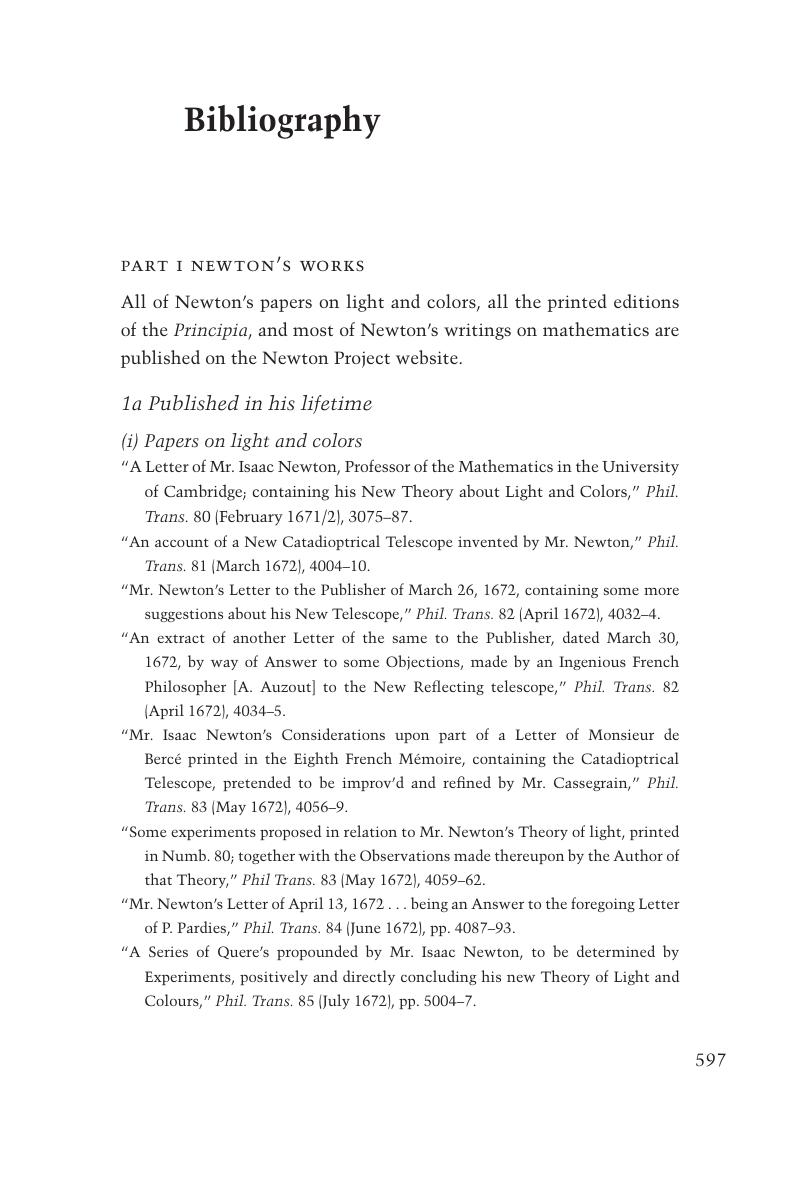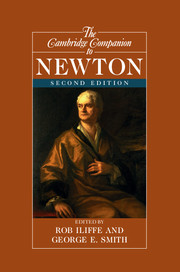Book contents
- The Cambridge Companion to Newton
- Other Volumes in The Series of Cambridge Companions
- The Cambridge Companion to Newton
- Copyright page
- Contents
- Figures
- Contributors
- Preface to the second edition
- Introduction
- 1 Newton's philosophical analysis of space and time
- 2 Newton's concepts of force and mass, with notes on the laws of motion
- 3 Instantaneous impulse and continuous force: the foundations of Newton'sPrincipia
- 4 The methodology of thePrincipia
- 5 Newton's argument for universal gravitation
- 6 Newton and celestial mechanics
- 7 Newton's optics and atomism
- 8 Newton's metaphysics
- 9 A brief introduction to the mathematical work of Isaac Newton
- 10 Newton, active powers, and the mechanical philosophy
- 11 A preliminary reassessment of Newton's alchemy
- 12 The religion of Isaac Newton
- 13 Isaac Newton, historian
- 14 Newton and eighteenth-century Christianity
- 15 Newton and the Leibniz–Clarke correspondence
- Bibliography
- Index
- References
Bibliography
Published online by Cambridge University Press: 05 July 2016
- The Cambridge Companion to Newton
- Other Volumes in The Series of Cambridge Companions
- The Cambridge Companion to Newton
- Copyright page
- Contents
- Figures
- Contributors
- Preface to the second edition
- Introduction
- 1 Newton's philosophical analysis of space and time
- 2 Newton's concepts of force and mass, with notes on the laws of motion
- 3 Instantaneous impulse and continuous force: the foundations of Newton'sPrincipia
- 4 The methodology of thePrincipia
- 5 Newton's argument for universal gravitation
- 6 Newton and celestial mechanics
- 7 Newton's optics and atomism
- 8 Newton's metaphysics
- 9 A brief introduction to the mathematical work of Isaac Newton
- 10 Newton, active powers, and the mechanical philosophy
- 11 A preliminary reassessment of Newton's alchemy
- 12 The religion of Isaac Newton
- 13 Isaac Newton, historian
- 14 Newton and eighteenth-century Christianity
- 15 Newton and the Leibniz–Clarke correspondence
- Bibliography
- Index
- References
Summary

- Type
- Chapter
- Information
- The Cambridge Companion to Newton , pp. 597 - 614Publisher: Cambridge University PressPrint publication year: 2016



